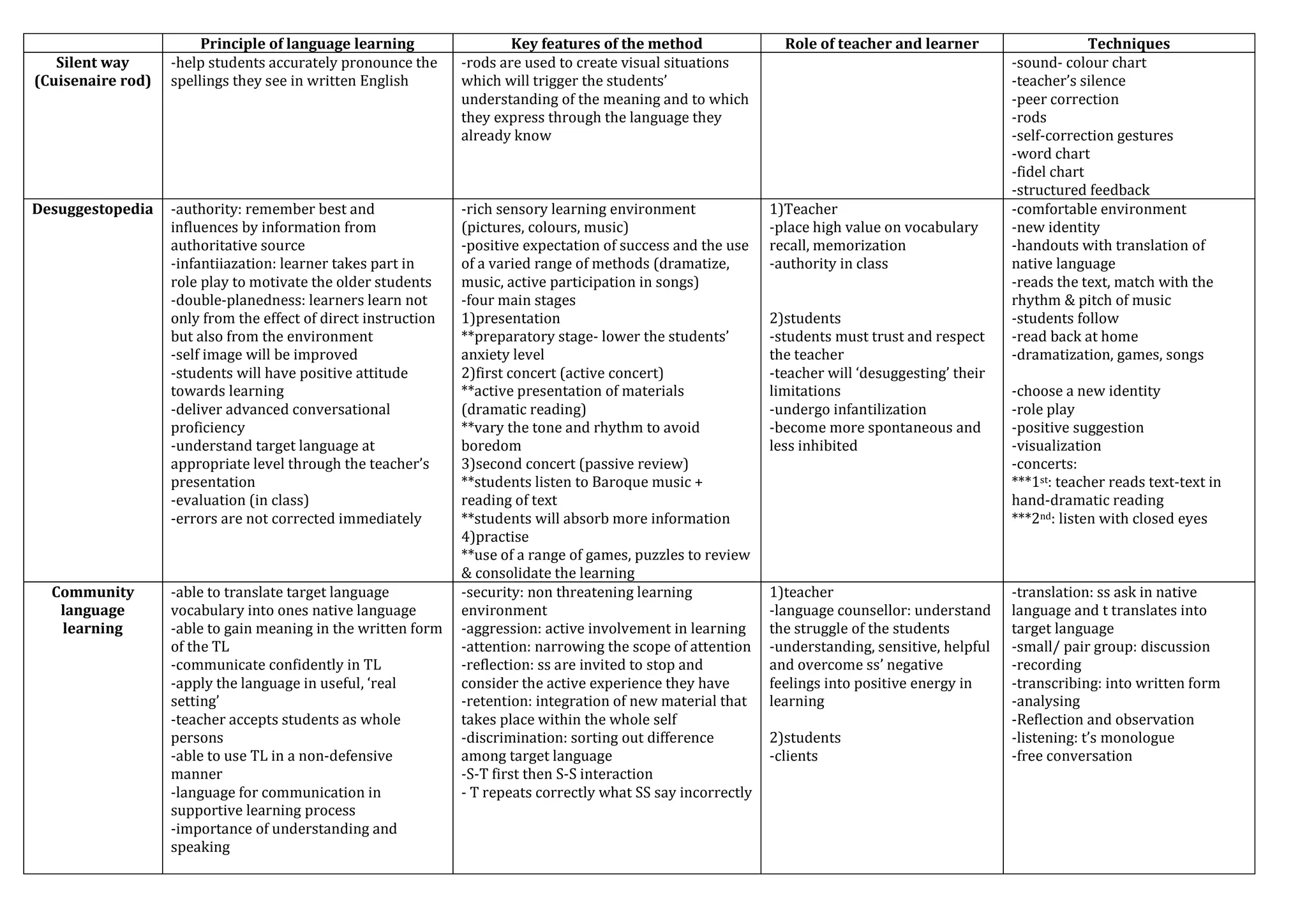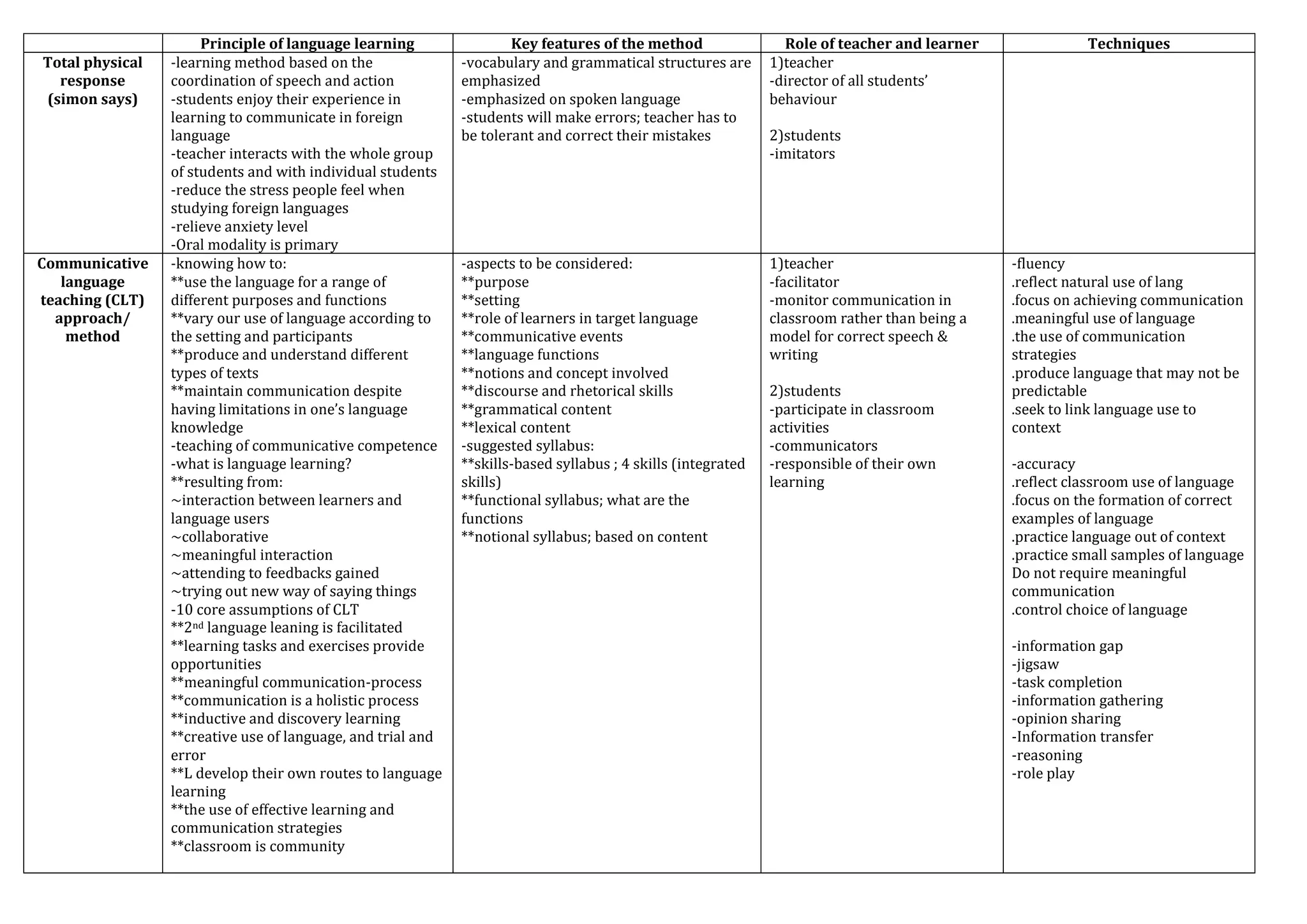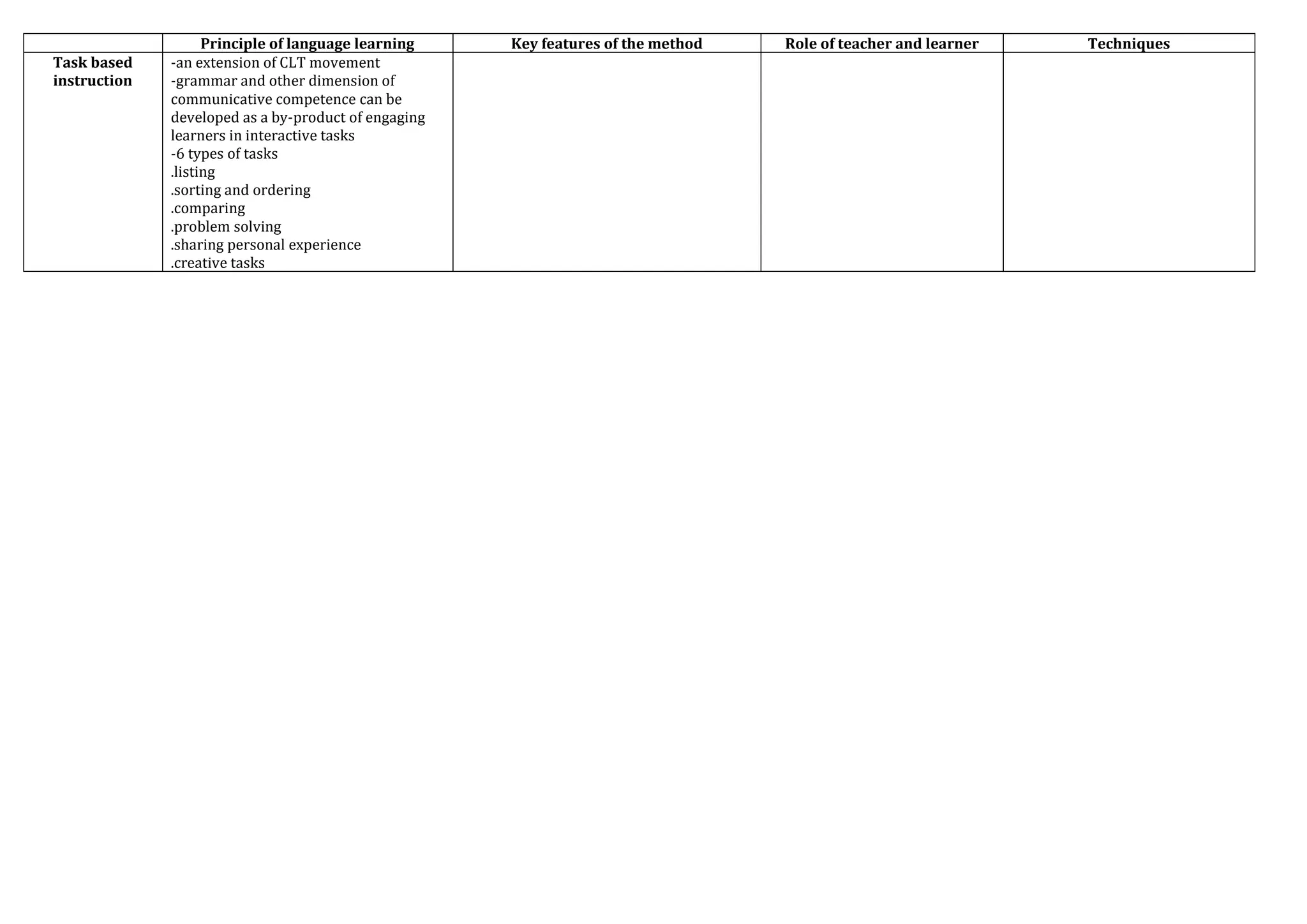The document discusses several language teaching methods, outlining their key principles, features, and the roles of teachers and learners. The methods covered include:
1) Grammar-translation - Focuses on reading, writing, and memorizing grammatical rules. Translation is used and the first language is the medium of instruction.
2) Direct method - Aims to think directly in the target language through discussion and reading without translation. Oral skills are emphasized.
3) Audio-lingual method - Uses repetition of dialogues and drills to form habits. Oral skills are developed through imitation and reinforcement.
4) Silent way - Uses visual aids like rods to help students accurately pronounce



